When Gorden Wagener, chief design officer of Mercedes-Benz, first paid a visit to Virgil Abloh at Louis Vuitton’s headquarters in Paris there was a small hitch. “It was a Saturday, and I was in front of this huge building but there was no doorbell,” says Wagener, who eventually gained entrance, via a series of phone calls, security gates and an elevator, to the studio of the men’s artistic director for Louis Vuitton. “The space was nothing that I would have expected – there were DJ mixing decks, pieces of furniture and clothing in a bright open space. You know within the first five seconds if you are going to connect with someone and those first impressions are never wrong. That meeting two years ago was the start of a great friendship and collaboration.”
Polymath designer-architect Abloh, founder of Off-White, has been at Vuitton since 2018. In July, its owner LVMH took a 60 per cent stake in Off-White and extended Abloh’s remit at the company. He now helps launch new brands and will collaborate with existing ones, adding creative magic to its interests in areas such as wines and spirits and hospitality.
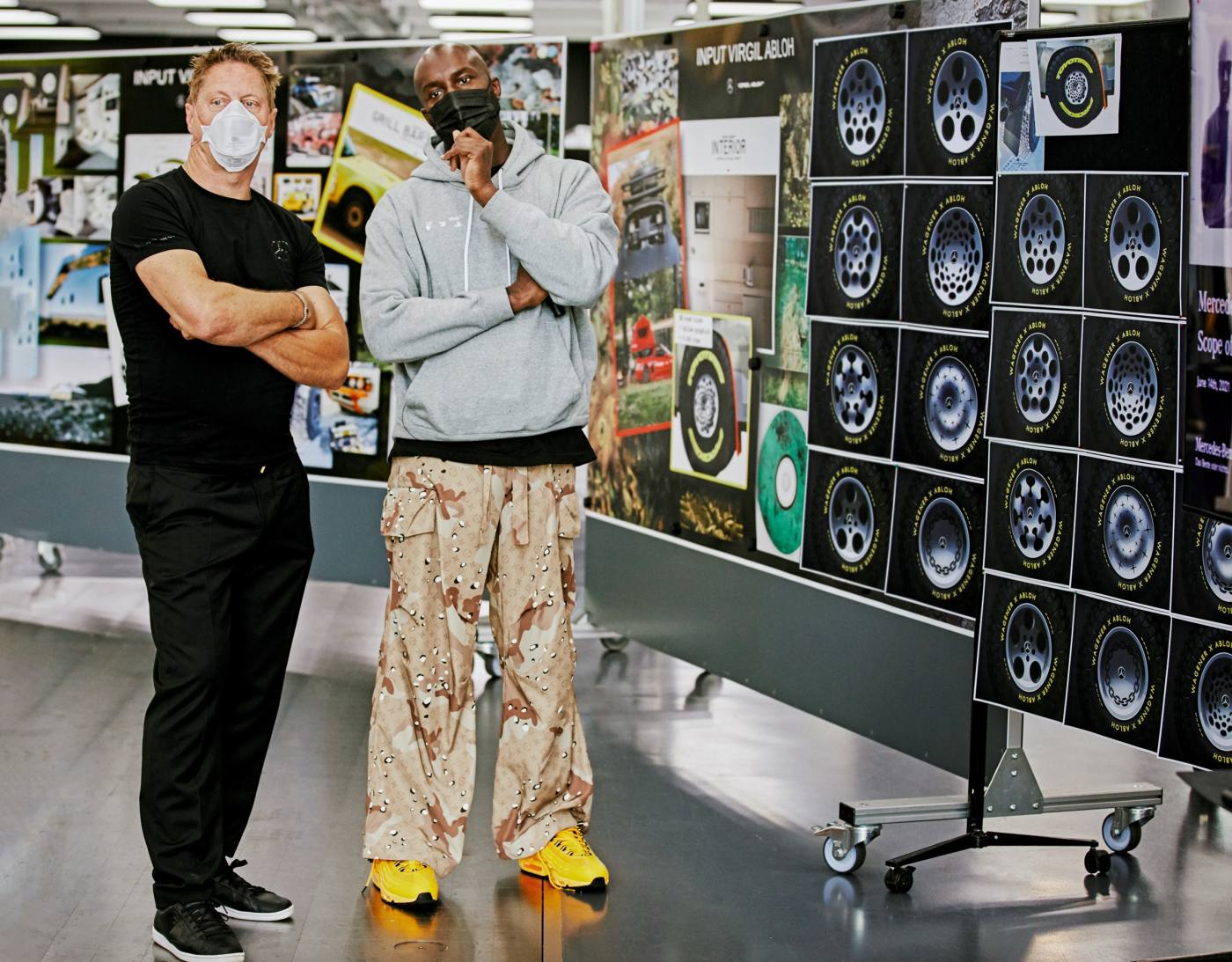

Like many creative unions today, Abloh first encountered Wagener via Instagram. “He has a great profile,” he says of Wagener’s glossy feed of silhouetted cars and fetishist details. Wagener has nearly half a million followers, while Abloh has so far clocked up 6.4m. “With industries like car design, you often get a feeling there’s nothing human there, but with Wagener’s feed I could follow different projects. In fashion, I aim to do that too, to demystify the operation of a fashion house: that big daunting building with no way to get in! Everyone knows where the door to ‘buy’ is but not the people behind the brand. We are both reporting to big systems of design but we are both still captivated by the small stuff and what we don’t know. So we met and thought, ‘Let’s do something here.’”
The duo’s first collaboration in 2020 was the radical reworking of the Mercedes-Benz G-Class (the first model dates from 1979) as a stripped-back, monolithic racetrack car with analogue speedometer and dials. Their second, which the pair have been working on for the past year, is Project Maybach: an electric show car that will make its world debut on 1 December to coincide with Art Basel Miami Beach. Gallerists, collectors and artists will be admiring the Maybach’s surprisingly sturdy silhouette and signature two-tone panelling that segues from earth tones to black under the palm trees, to the rhythm of ocean waves. The art-world intervention is a jump from the car-boffin audience of a motor show. In fact, Abloh is planning a creative blitz on Miami. On 30 November, he will also stage a spin-off Louis Vuitton show in the metropolis, presenting its SS22 menswear collection with 14 extra looks he’s designed specifically for the occasion.
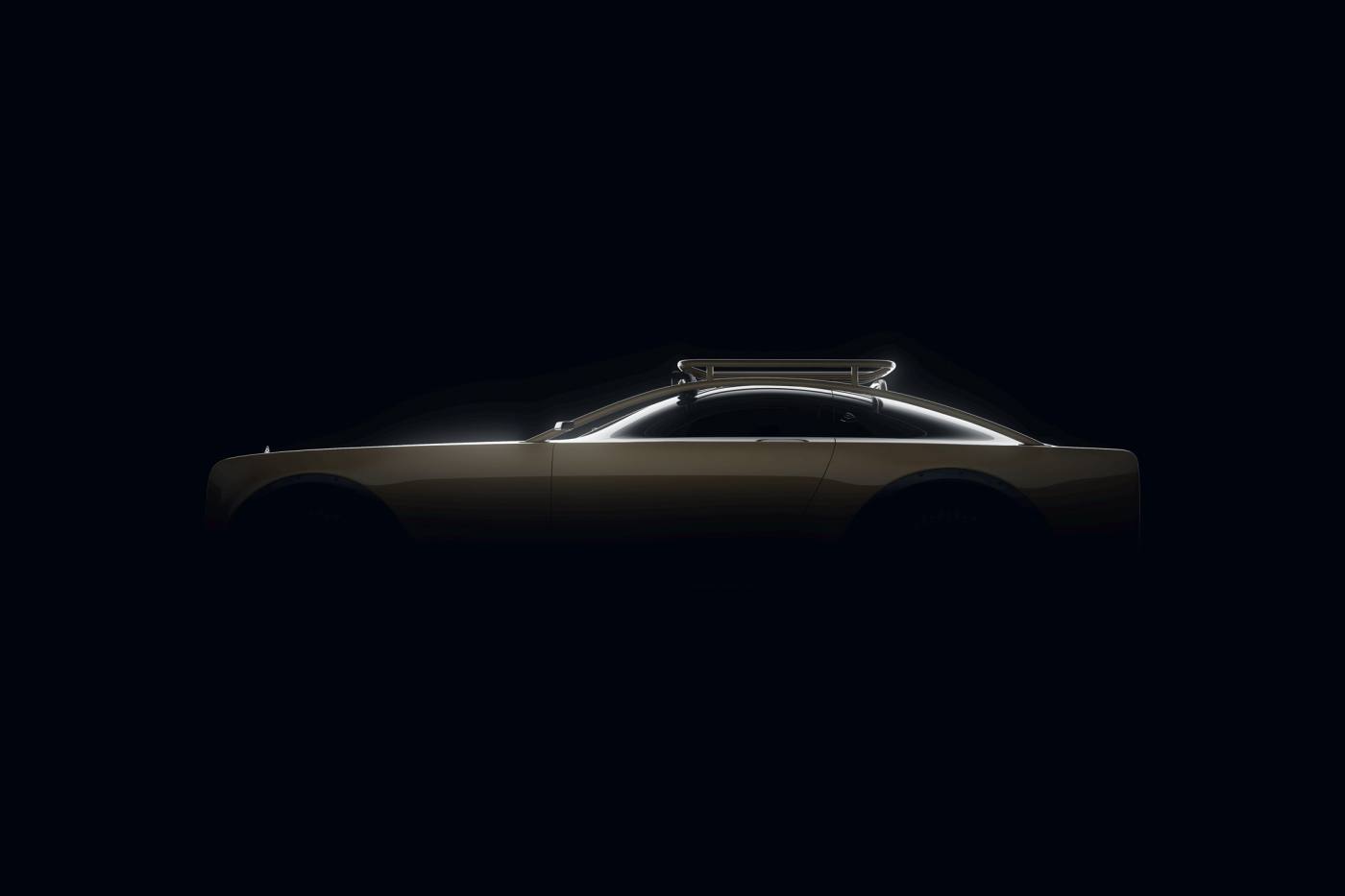
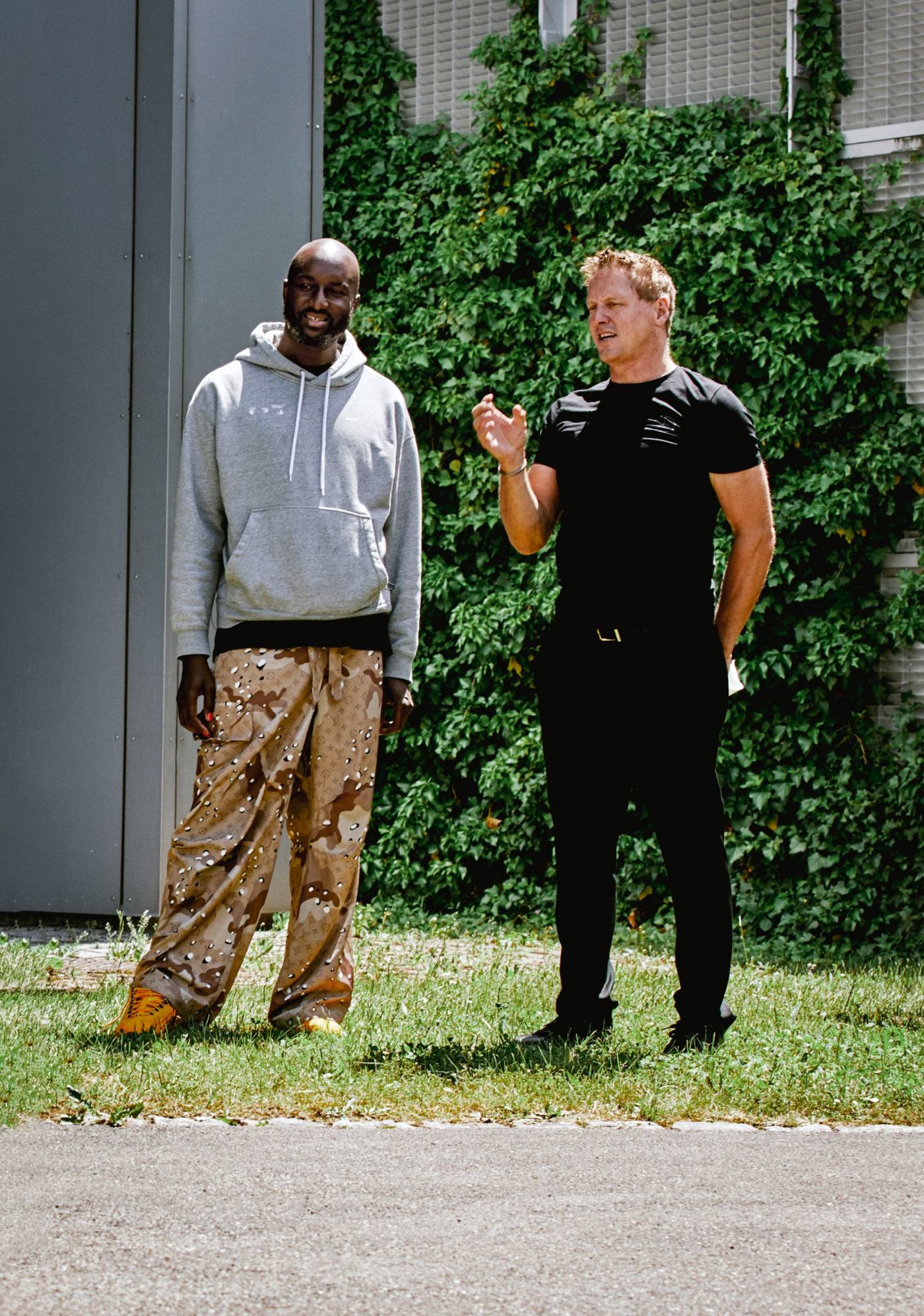
“The Maybach is the epitome of luxury with 100 years of history,” says Abloh of the W3 car that Karl Maybach and his father Wilhelm conceived. The vehicle secured Maybach’s reputation as an aspirational, innovative automotive brand. “I look for a leap forward and I always want to discover the unexpected twist,” says Abloh approvingly. The designer, who grew up in Rockford, Illinois, before studying civil engineering at the University of Wisconsin-Madison, followed by a master’s in architecture at the Illinois Institute of Technology in Chicago, began to think about our relationship with nature and the way we interact and go on adventures in the great outdoors. The concept for the electric car grew out of a pandemic-accelerated rediscovery of nature rather than a desire to create a swaggering gesture on urban roads.
“Coming out of the pandemic, I visited the Countryside, The Future exhibition by Rem Koolhaas at the Guggenheim,” continues Abloh. “It showed findings from a world survey that highlighted the fact that 50 per cent of the world’s population lives outside the city. Instead of focusing on the city side of cars – as that is what we know – we asked what this historic vehicle could look like if it takes us to the 50 per cent who live in the countryside? Ideas of space, air, natural light and using a car to explore – that became our north star.”
With Wagener based between California and Stuttgart (near Mercedes-Benz HQ) and Abloh in Paris, Project Maybach began to take shape over virtual meetings and design data transfers. “Mercedes has a global network of satellite studios and a lot of the process is virtual, but at some point you have to be in the same room and touch something that is not a digital product,” says Wagener. The two met in Germany to explore the full-size design. “Maybach is a sophisticated urban car – it’s Rodeo Drive. We wanted to create a Maybach adventure and take it out into the woods. It looks like a capable off-road vehicle, but different to what you have seen. You can buy an SUV from every brand, so this had to be surprising, shocking even, with its exaggerated design, proportions and message,” adds Wagener of the classic yet high-tech design.
While today’s SUVs require the driver and passengers to sit upright and ride above the road, Abloh was insistent on a more laidback horizontal line with a bonnet and trunk that fly in the face of contemporary curvilinear styles. For the interior, he was struck by modular hotel designs in Japan. “With car interiors as we know them, there is always a link to home interiors, but I wanted to take a more utilitarian approach, creating a shell with seats that can be taken into the outdoor environment,” he says of his multifunctional prototype. “We went down this road thinking about indoor and outdoor usage.”
Neither of the duo anticipates a “that’s nice” reaction. “A concept car is about designing the luxury of the future and as designers we live in the future,” says Wagener, who is also chief design officer of the Daimler Group. “The average person might not be there yet – the design might shock and then grow on them. And ultimately this is the purpose of luxury – it concerns beauty but it must be extraordinary, and with that definition it is not for everyone. If you try to please everyone, you will not create something new. That’s the key to our approach. It must be tasteful and beautiful, even if shocking, and that’s what Virgil does and why we get along so well.”
Wagener has been responsible for designing vehicles including the Mercedes-Maybach GLS (2019); Mercedes-Maybach S-Class (2020); and a concept Mercedes-Maybach EQS (2021). The first electric Maybach will come out in 2023; limited 100th-anniversary editions of the Mercedes-Maybach S-Class and GLS called Edition 100 will be available later this year. Electric is the future, as the $1tn valuation of Tesla proves. The Mercedes-Benz EQS, an electric S-Class model, launched in April 2021.
While Abloh is famously prodigious, he stands in awe of Wagener’s work. “His output is insane. In art and fashion, you design in seasonal cycles. I can see a painting, get inspired and change a whole collection because I like this versus that. Automotive could not be more different than designing a sneaker, which you might only hold in your hand three times before production,” he continues. “A car is a piece of technology, it’s architecture, it’s ship-making, and even for a concept car there are regulations. If I see something cool on the road or see a cool building, I know someone had to push boundaries for it to be realised and I appreciate that.”
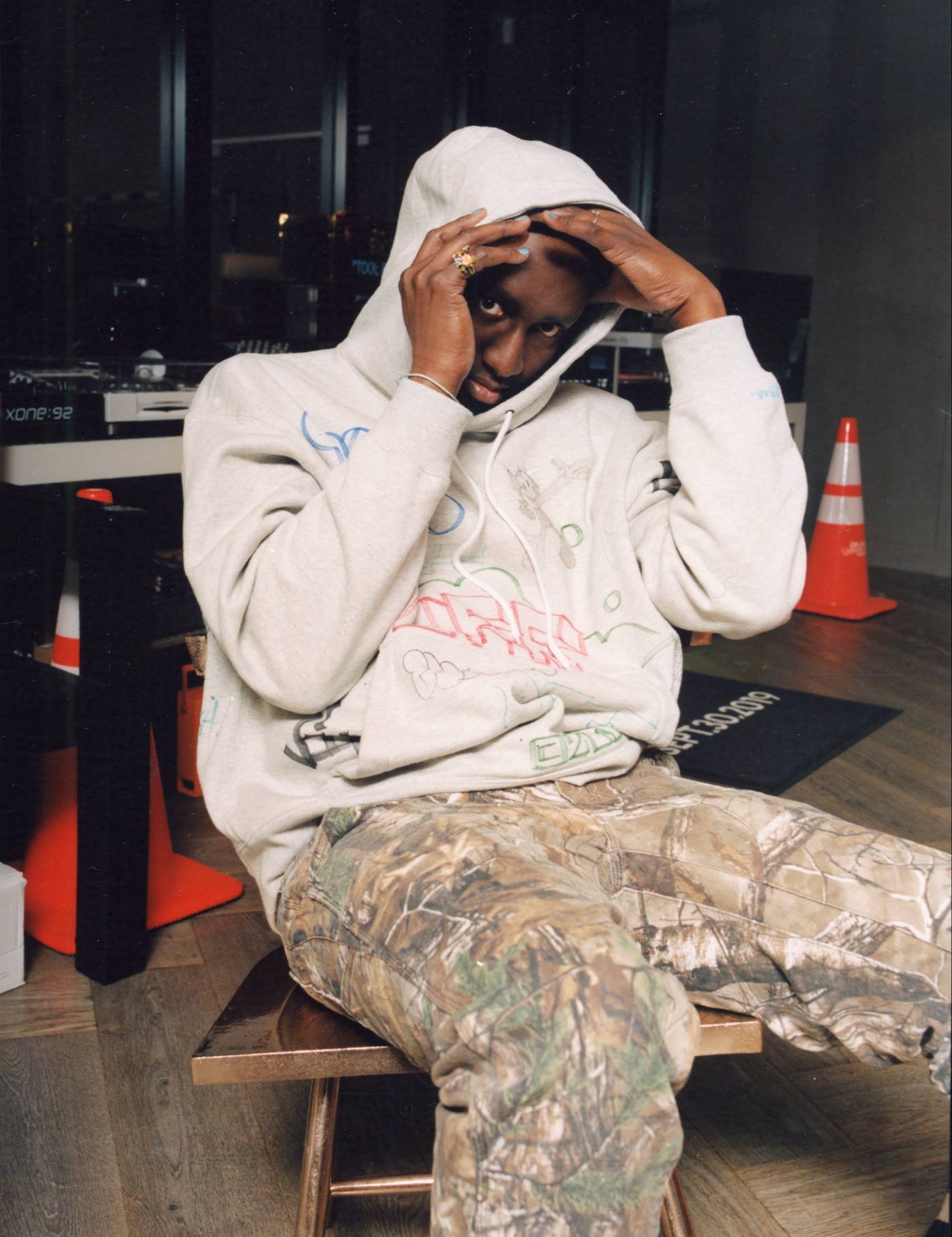
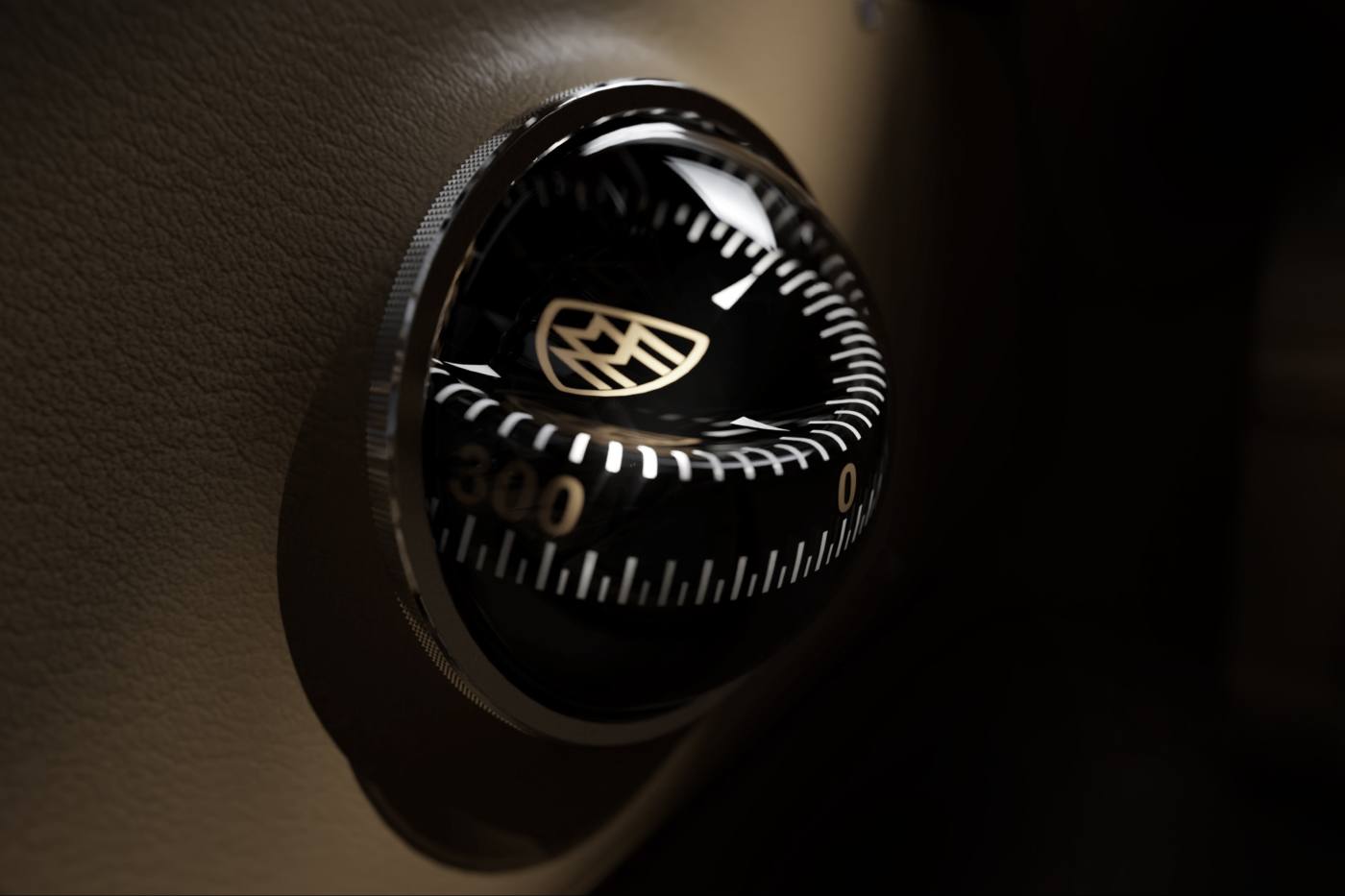
For both Wagener and Abloh, the Mercedes brand has long been part of their design education. “My dad drove one and it had a certain aura, a self-assuredness,” says Wagener. He admits that the image of Harley Earl driving his own concept cars to work at the General Motors car plant in Detroit in the 1930s has a deep allure. “He was the first head of design and he was like a movie star.” For Abloh, Mercedes always shone as a symbol of luxury. “When I saw a picture of Jay-Z driving an S-Class, I knew I wanted one of those.”
Now both fathers themselves, the pair’s own auto choices are driven by the desire for space and comfort. Wagener drives a six-seater GLS 63, and a GT while driving solo, while Abloh and his wife Shannon have matching G-Classes with identical topstitching on tobacco-brown leather interiors. “Even the licence plates almost mimic. I’m super-particular! I’ve always had G-Wagons and my kids know the car so well they even remark on how they love the new suspension,” he says, smiling.
The prototype is not all posture and no purpose. A limited-edition Mercedes-Maybach S-Class that takes a cue from the show car will be released in 2022. Until then, for the first imaginary trip Wagener pictures himself driving to the beach with surfboards on the roof, while Abloh fancies a snowboarding trip to a swish Swiss resort. Although the duo might describe the project as seamless, plenty of ideas were binned along the way. “Collaboration should not be a walk in the park,” concludes Abloh. “If all is ‘agreeable’, you are not testing the limits.”